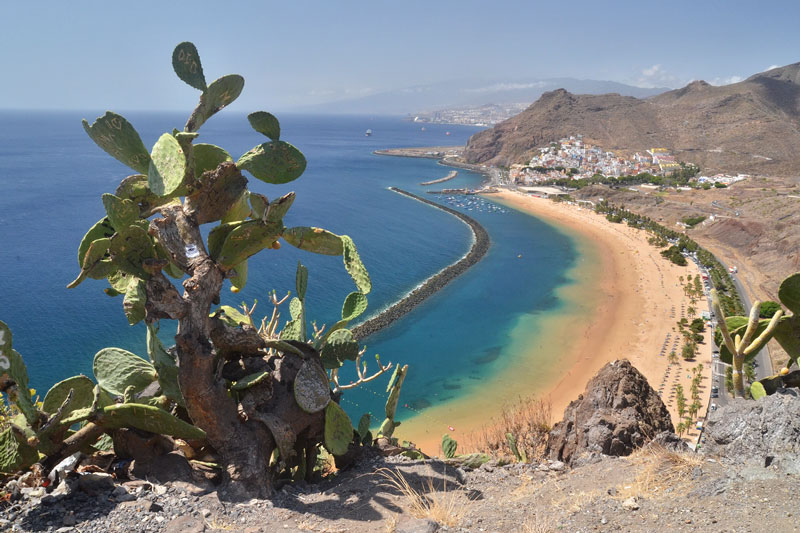Tenerife is the striking grande dame in the archipelago family. Attracting over six million visitors a year, the island’s most famous southern resorts offer Brit-infused revelry and clubbing, combined with white sandy beaches and all-inclusive resorts.
But get your explorer's hat on and step beyond the tourist spots and you will discover an island of extraordinary beauty and diversity, with remote mountain-ridge villages, cultured port settlements and charming ancient towns.
From a distance La Gomera appears as an impenetrable fortress ringed with soaring rock walls. Noodle-thin roads wiggle along cliff faces and up ravines, and the white specks that turn out to be houses seem impossibly placed on inaccessible crags. Up-close, however, that rough landscape translates into lush valleys, awe-inspiring cliffs, glittering black-pebble beaches and bold rock formations sculpted by volcanic activity and erosion.
Itinerary – Tenerife & La Gomera
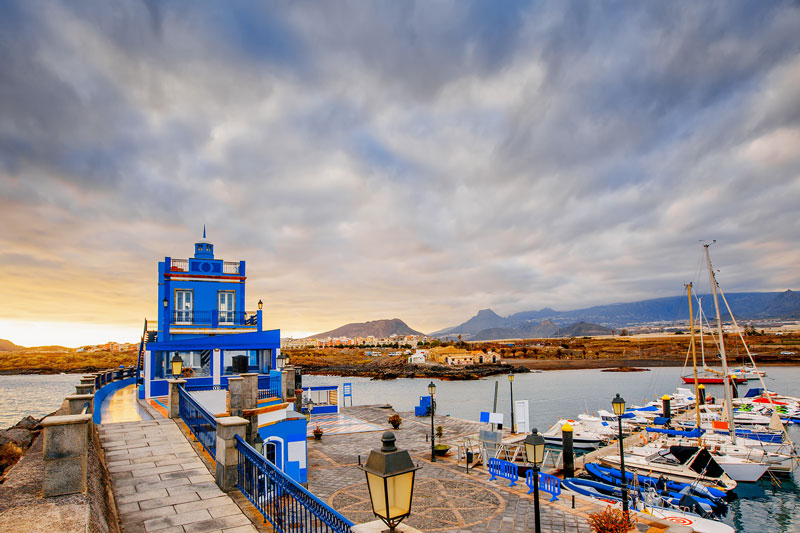
Day 1 – San Miguel de Abona
Just a little way inland from the marina you will find that the real Tenerife is alive and well and living in the hill towns strung along the TF28 - affectionately called The Forgotten Road. Surrounded by contrasting landscapes of neat terraces covered in vines and potatoes, rocky outcrops of volcanic cones and deep barrancos covered in cactus spurges, spiny lettuce and prickly pear plants, San Miguel de Abona keeps its pretty profile hidden. One of the oldest towns in the south it was an important centre for Tenerife’s original inhabitants, the Guanche, and as late as 1933 the bodies of 70 natives were found in a burial chamber. It is an agriculture centre, particularly known for its tomatoes, potatoes and vines which may go some way to explaining why it has such good restaurants.
Day 2 – San Sebastian
La Gomera's capital in every way – economically, bureaucratically and historically – seaside San Sebastián centres on a delightful historic core with shaded plazas, sun-bleached pastel-painted buildings and pedestrian-friendly streets sprinkled with shops, cafes and restaurants. Its main claim to fame is that Christopher Columbus stayed here on his way to the New World, and the explorer's every footstep (real or imagined) in the town has been well documented for visitors. If you’ve just hopped off the boat from Tenerife's Los Cristianos, shift down a gear or two: slow-paced San Sebastián feels a world away from its neighbour across the water.
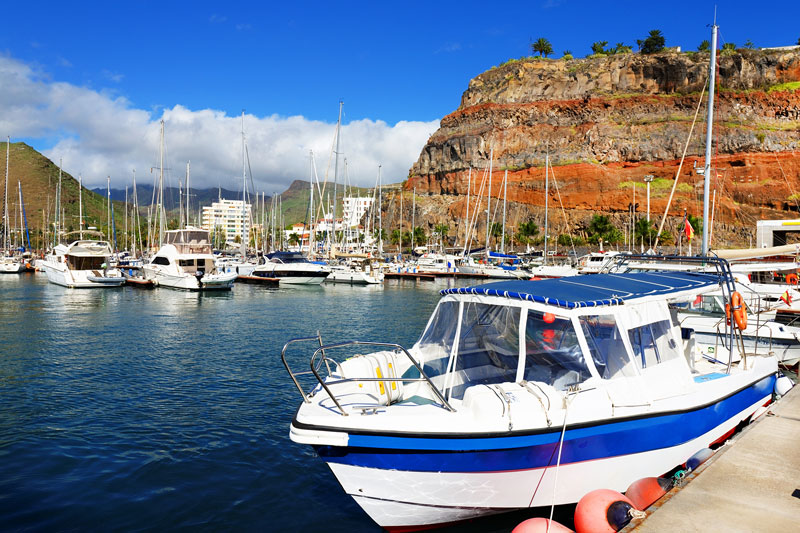
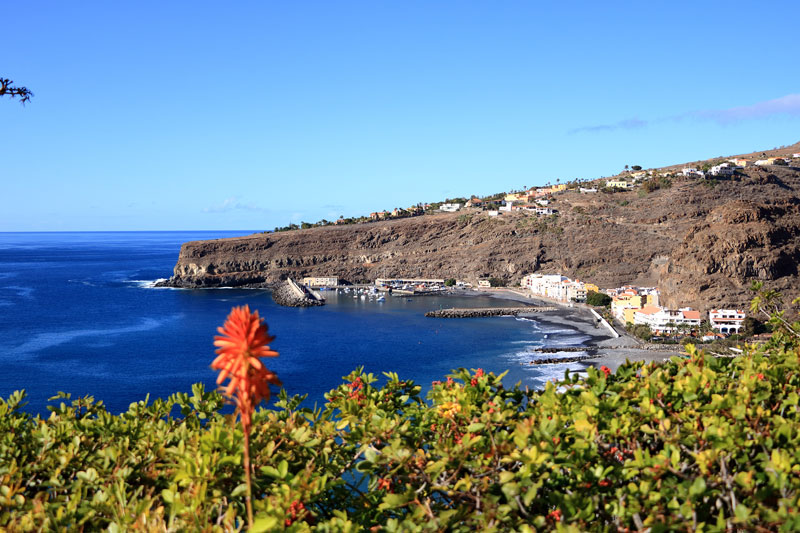
Day 3 – Puerto de Santiago
The fishing village Playa Santiago, in the delta of many beautiful ravines, lies in the sunny south of La Gomera. In the area where fish used to be processed, visitors can now enjoy the quiet atmosphere of the town. In the centre is the lively Plaza del Carmen – a favourite meeting place of the locals and where the promenade stretches along the harbour. Besides typical Canarian cuisine, bars and restaurants offer a good location to look out over the water. In 1987, the Norwegian Olson family built a hotel complex here; against the backdrop of a somewhat barren landscape, the hotel seems quite unreal. Starting with tomato and banana farming, the ship-owner then turned his attention to fish processing and later to tourism, ferries and luxury hotels, becoming the biggest employer on the island.
Day 4 – Puerto de Vueltas
Puerto de Vueltas, the protected harbour of the Valle Gran Rey, where bright fishing boats and sailing yachts bob in the water, lies at the foot of steep cliff faces. Rustic bars, restaurants, colourful shops and apartments bring life to the old district. The layout is somewhat chaotic, with its many lanes and stairways giving the town its charm. To watch the fishermen come in with their catch, it is best to find a spot in the harbour bar on the jetty, offering the perfect opportunity to experience the locals close up.

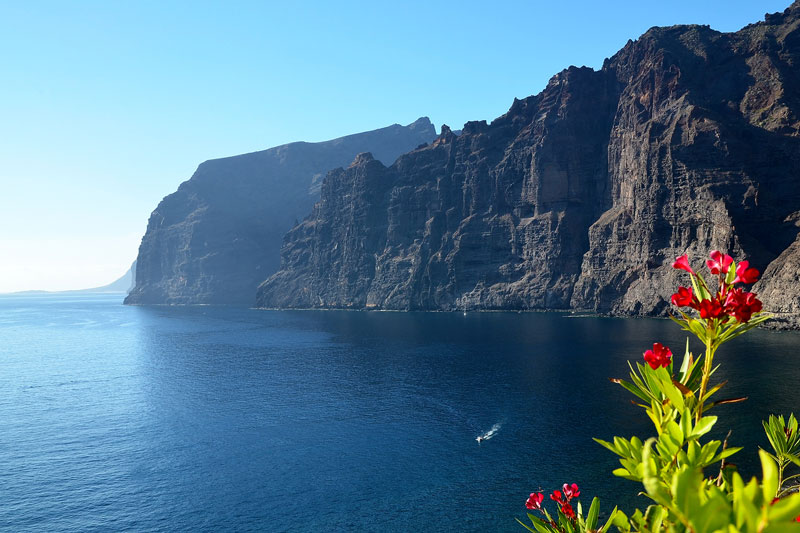
Day 5 – Los Gigantas
Los Gigantas is a very pretty resort with great care having been taken over the design and construction to ensure any development blends in well with the surroundings. It is a small, tranquil place with an air of exclusivity about it, with little danger of the resort losing this atmosphere and ambience by expansion in any direction – it is closed in on all sides, nestling between the area’s natural rocky confines and the Atlantic Ocean. Life revolves around The Plaza, the Avendida Maritima main street and the Marina – next to which is the beach, where an array of bars and restaurants overlook the boats and the neighbouring island of La Gomera.
Day 6 – Los Christianos
Los Cristianos is one of the most popular and busy resorts on the Canary Islands, with beautiful beaches and a harbour offering fishing trips, diving excursions and ferries to La Gomera. It was once an old fishing town that over the years has experienced major expansion. Much of the action centres around the pedestrian area bordering the beach. This long promenade is a haven for good quality restaurants, bars and cafés that offer food from around the world as well as typical Canarian dishes. By night, it lights up as one of the busiest places in the south of Tenerife. Away from the beaches and promenade area, you will discover a labyrinth of shops including boutiques, designer labels and other great places to pick up a bargain, with numerous cafés and bars scattered amongst this shoppers’ paradise.
